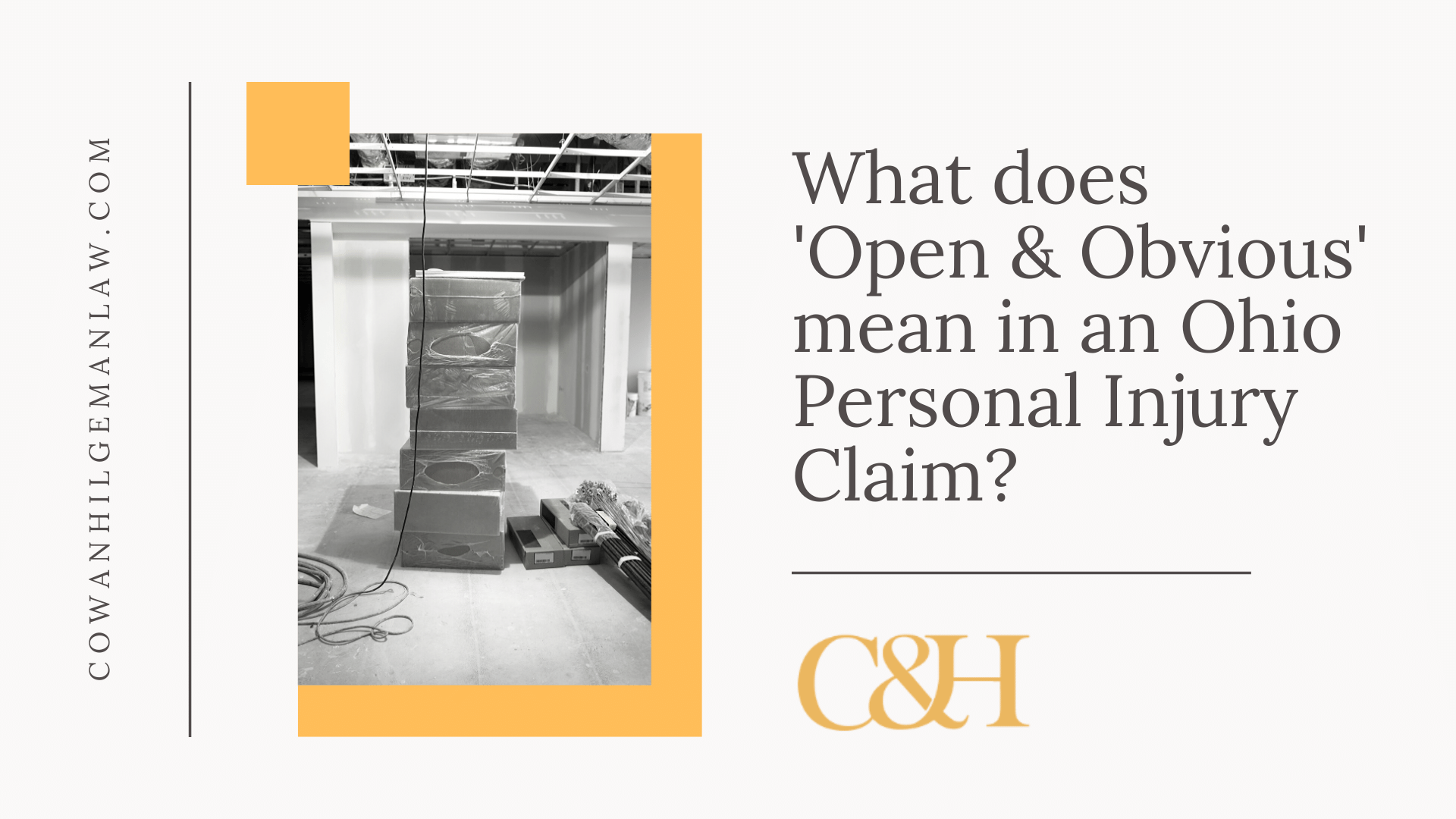It is the responsibility of every landlord, tenant and property manager to ensure that their premises are free from hazardous conditions that may cause injury. When an injury does occur, however, a commonly used defense is that the hazard was blatant and unavoidable - open and obvious to all.
In other words, anyone who was paying attention would have been able to see an obvious danger in plain sight and taken steps to avoid it.
This argument takes blame away from the property owner and places it squarely on the injured victim, even if the property owner was clearly negligent.
To prove negligence in an Ohio Slip and Fall Case, the following conditions must be met:
- The owner owed a 'duty of care' to the plaintiff - The legal obligation to prevent harm to their visitors and patrons.
- They breached that duty - such as, forgetting to put out 'wet floor' signs after mopping.
- An injury occurred as a direct result of that breach - for example, someone slipped on the wet floor.
Unfortunately, even when each element of negligence has been met, a legal case against the property owner may not exist because of the Open and Obvious defense.
Some examples of hazards that have been deemed by the courts to be open and obvious - and therefore not actionable - are:
- Planters that are six feet in diameter
- A sidewalk curb
- A ladder on the selling floor of a store
- Uneven concrete where there were no obstructions to the person’s view
- Brick border around a tree
- Raised joints where asphalt met concrete in a parking lot
- Disassembled store shelving in an area that was clearly being redesigned.
Defendants in these cases have successfully argued that they are not responsible for injuries that occurred due to lack of proper care and attention, or the plaintiff underestimating the danger presented by a hazard.
How is the “Open and Obvious” Rule Treated in Ohio?
There are numerous ways that the open and obvious rule can be used as a defense for property owners, but it doesn’t always end in their favor. To get a better understanding of how it works, here is an actual example from Ohio courts:
In a case in which the plaintiff tripped over some exposed computer cables and fell, no obstacles were blocking her view of the cables and no previous incidents involving similar circumstances ever occurred. When you consider the facts, it is clearly apparent that the cables presented an obvious hazard for tripping.
Nonetheless, the court found that, although the cables qualified as an “open and obvious” condition and discharged the duty to warn, it did not discharge the property owner’s duty to maintain the property in a reasonably safe condition. In conclusion, the plaintiff still had a valid claim even though the danger was glaringly obvious.
Determining whether the open and obvious rule will apply to your case is a question that only an experienced premises liability attorney can answer. Premises liability law is often complicated and hiring a lawyer who is familiar with it is always in your best interest.
To find out whether your Ohio premises liability claim has merit, or whether an 'Open and Obvious' defense can successfully be used by the defendant, call to schedule a free consultation with our Personal Injury attorney. Cowan & Hilgeman frequently takes cases that other law firms reject. Call (937) 222-2030 today.

